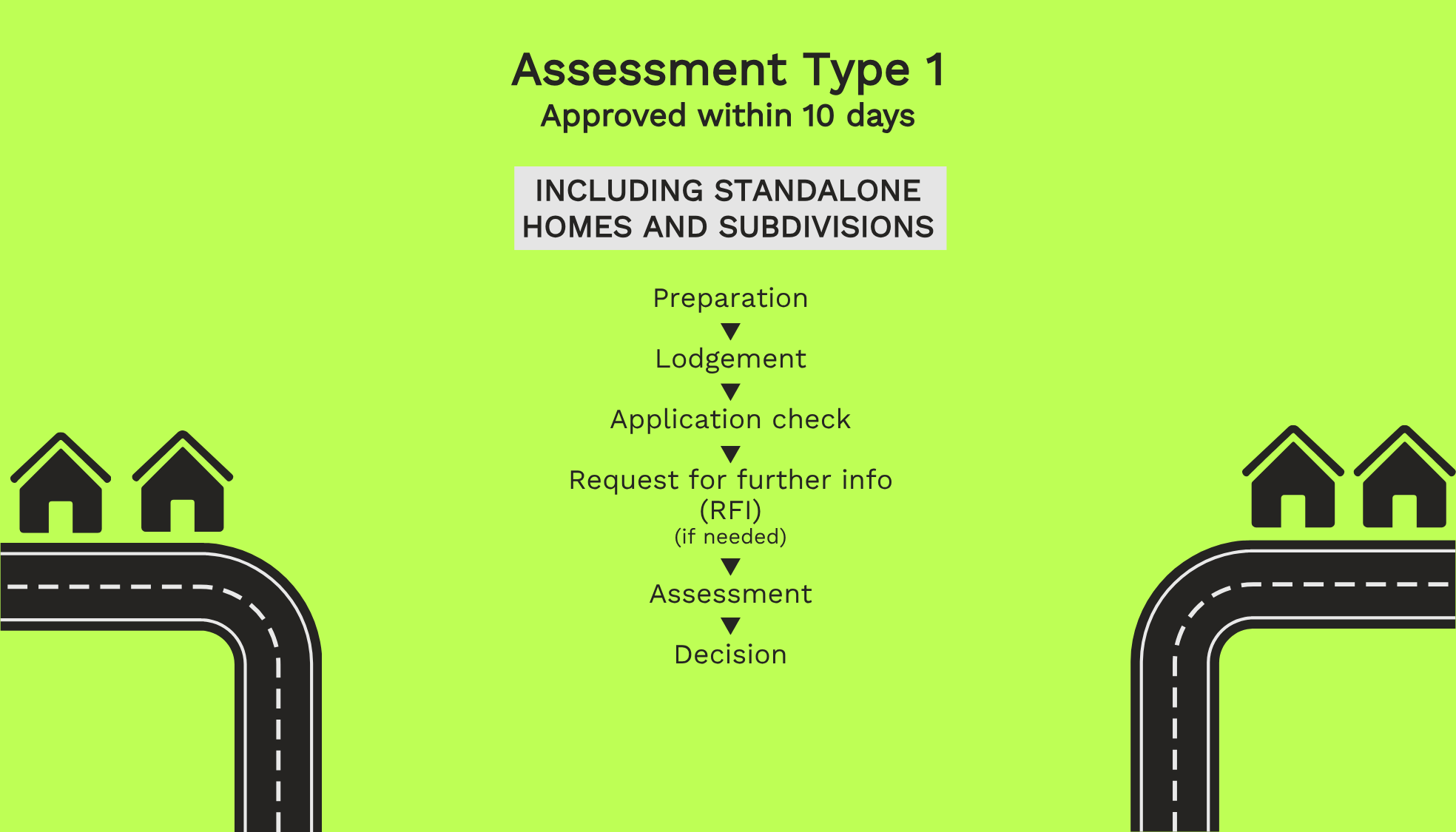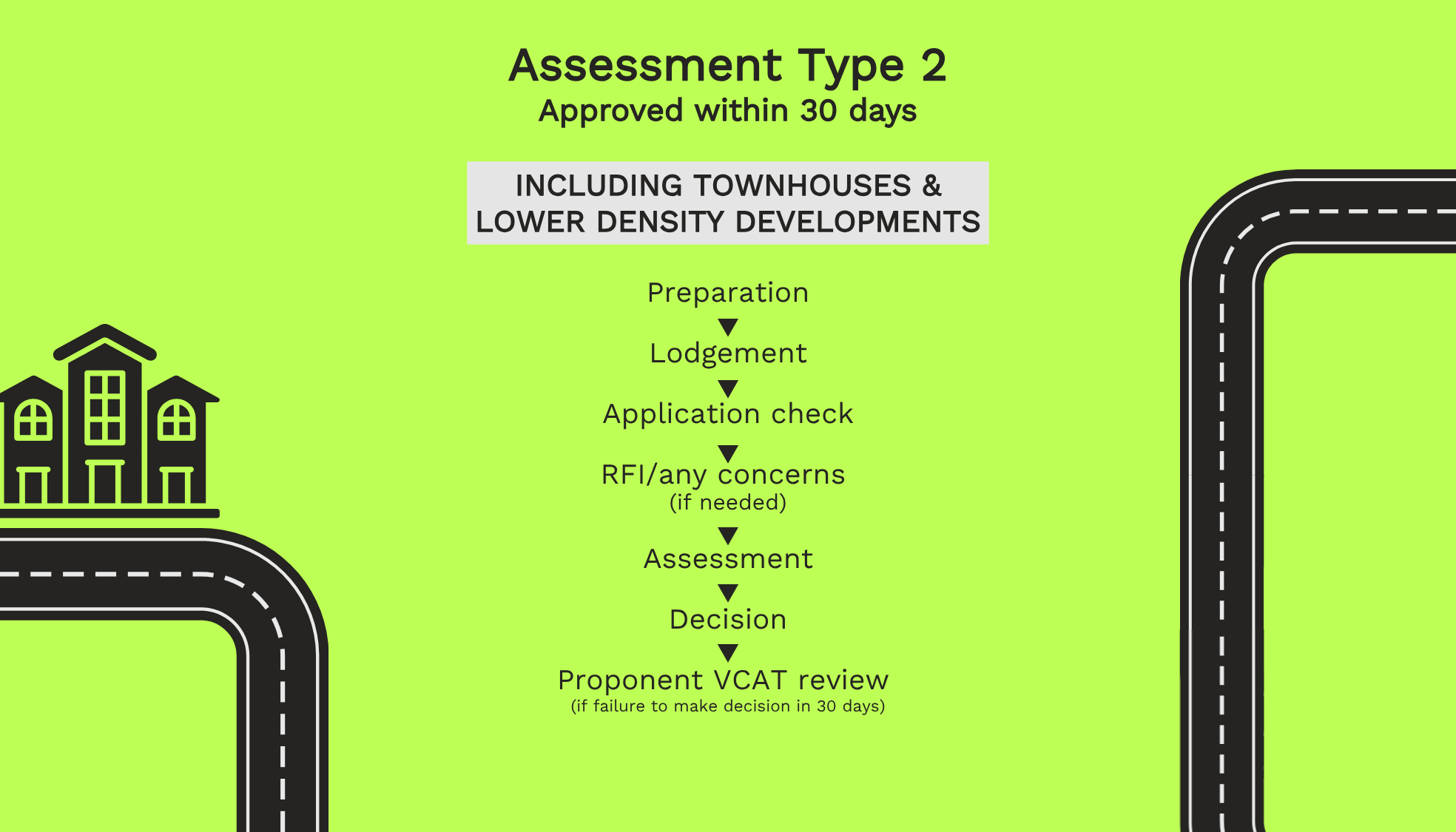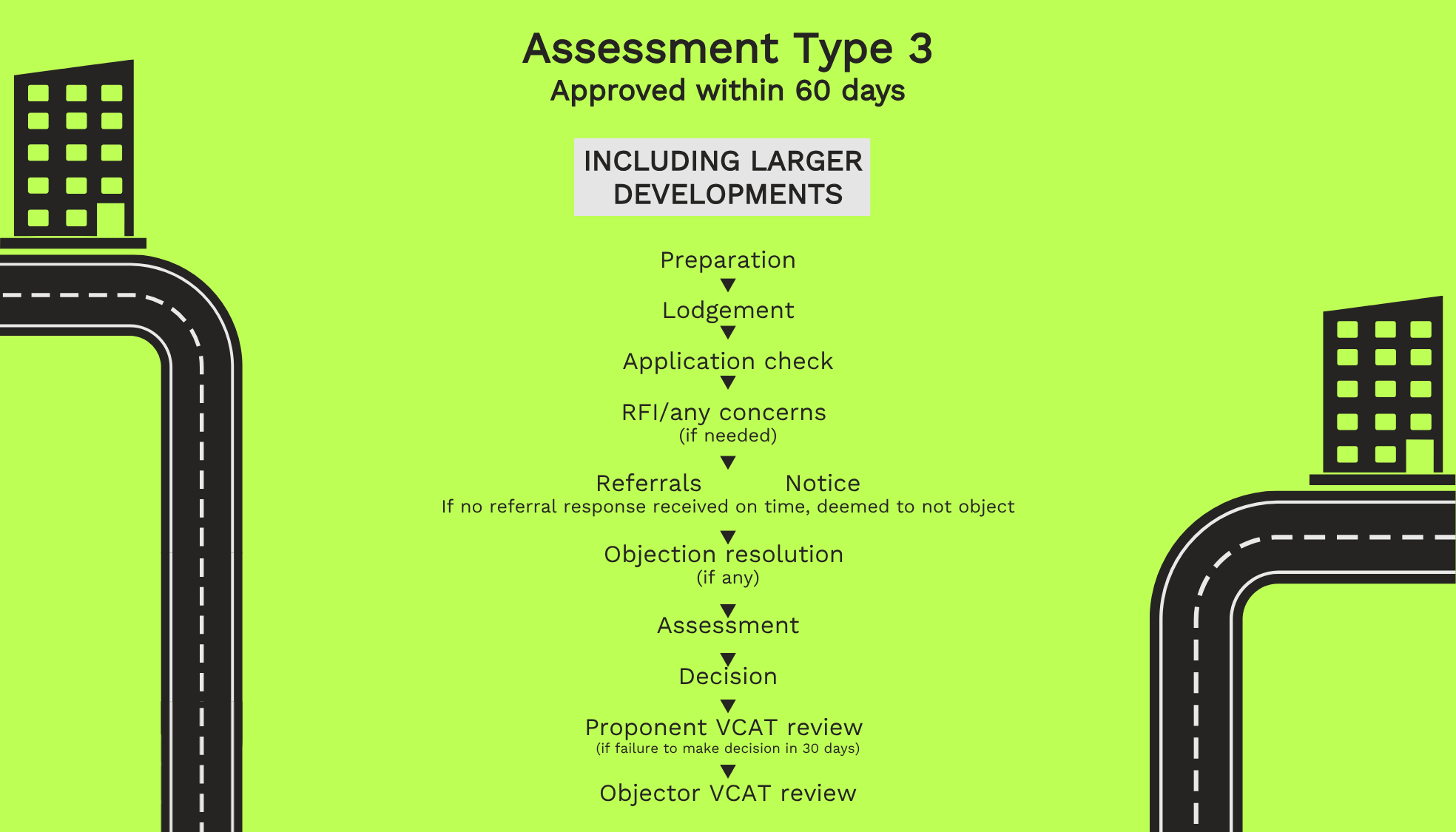
PLANNING AMENDMENT (BETTER DECISIONS MADE FASTER) BILL 2025
By Andrew Clarke, UPco Principal Consultant

On the 28th and 29th of October 2025, the Allan Labor Government announced and introduced the Planning Amendment (Better Decisions Made Faster) Bill 2025 into the Victorian State Parliament.
The Bill proposes substantial changes to the Planning and Environment Act 1987. It supplements changes which have already been approved and are proposed to come into operation on the 25th of November 2025. Whilst there are numerous changes proposed, two key areas of reform relate to the planning permit approvals system and the planning scheme amendment process.
Reforms to the Planning Permit Approvals System
The key reforms proposed to the planning permit approvals system under the Bill include establishing three permit assessment processes (Assessment Types 1, 2 and 3) based on the degree of complexity of different permit applications. The three Assessment Types contain:
- timeframes for requesting information
- direction as to whether notice is required and, if so, the extent of notice that is required
- requirements identifying the extent to which applications are referred to public authorities for comments and conditions
- the timeframe for a decision and whether deemed approvals apply, or whether a failure to determine an application gives rise to a right of review at VCAT.
Assessment Type 1
This will process simple, low risk proposals identified and specified by the planning scheme that applies to the relevant land. Assessment Type 1 will replace the existing VicSmart process. As is the case with VicSmart applications, there would be no public notice of these permit applications with the assessment of applications being made by responsible authorities against the relevant decision guidelines and codes identified in the planning scheme.
If the responsible authority does not make a decision within the prescribed period, then the permit is deemed to be approved.

Assessment Type 2
This will apply to uses or developments that are intended to comply with specified codes; or significantly comply with specified codes but also include an element or elements that do not comply with the code but are permissible under State and local policies applied under the relevant planning schemes.
No notice will be required to be given for permit applications under the Type 2 assessment process unless the code or the planning scheme specifies circumstances where notice must be given.
The statutory time period for making a decision will be prescribed in regulations and is intended to be less than the 60 day period that is currently specified.
The Type 2 assessment process will only be applied to permit applications where it is not necessary to refer the permit application to a referral authority.
Codes, such as that developed for townhouses and low rise developments, are proposed to be developed in collaboration with local government, the development industry and the community during the proposed implementation period.

Assessment Type 3
This will closely mirror the existing planning permit assessment process set out in the Planning and Environment Act 1987 that provides for public notice and referral where it is required. This assessment process will apply to proposals that are more complex and represent a higher risk of adverse effects on owners and occupiers of land in the proximity of the proposed development and the local community more generally.
Decisions on Type 3 applications require the balancing of State and local policy, and a determination of appropriateness against the purpose and decision guidelines of the zone or overlay controls that apply to the land.
The Assessment Type (1, 2 or 3) will be specified or prescribed by (future) regulations or planning scheme provisions. However, the Bill specifies Assessment Type 3 as the default process that is applied.

Other major changes to the permit approvals process include:
- The preparation and implementation of future regulations to specify the type and extent of notice required for each type and class of permit application instead of reliance on differing interpretations of the current standard potential material detriment test.
- Requests for Further Information from the responsible authority to the applicant for permit must have a clear link to the assessment that is required to be undertaken and demonstrate a connection to the controls that trigger the permit required. To achieve this, the form and content of further information requests will be prescribed. Subject to complementary regulation changes, requests for information will also not reset the statutory clock to zero elapsed days, but instead, will result in a pause (conceptually similar to the pause that occurs during the public notice phase).
- Responsible authorities to have greater discretion to approve the removal or variation of a restrictive covenant in circumstances where the restriction is inconsistent with what is permitted under the planning scheme that applies to the land to which the covenant applies.
- Changes to referral authority processes by making it clear that if there is a failure to respond within the relevant timeframe, the referral authority is deemed to not object and the permit application progresses without any conditions being recommended or required. To address the referral authority’s resourcing issues that lead to delays, the referral authority may charge a fee to the applicant when applications are referred to them and responses are provided within statutory timeframes.
Reforms to the Planning Scheme Amendment Process
The Bill amends Part 3 of the Planning and Environment Act 1987 to establish three pathways for planning scheme amendments that are proportionate to complexity, risk and the potential impact of the amendment. The three pathways are Low, Moderate and High Impact Amendments. At this stage, the criteria for each pathway are unclear and will be specified in future regulations approved by Government.
Low Impact Amendments
These will require the Planning Authority (the public agency, such as the local Council preparing the planning scheme amendment) to consult with affected landowners, occupiers and prescribed authorities. The Planning Authority must then deliver a report to the Minister for Planning to inform the Minister’s decision making on the amendment.
Moderate Impact Amendments
These will require public notice and exhibition to occur but there would be no independent review by a planning panel and no public hearing unless the Minister determines that independent review and advice from a panel is needed. The Minister would make this decision after the proposed amendment is adopted by the Planning Authority and provided to the Minister for approval.
High Impact Amendments
These would include public notice and exhibition and independent review by a planning panel broadly similar to the existing process.
Review by a planning panel does not necessarily mean that a public hearing would be conducted. Planning panels will have discretion to undertake their review functions using only written submissions “on the papers”, as the panel sees fit. The Panel will also have discretion over who the panel chooses to hear from during the conduct of public hearings. This differs from the present system where a Panel must give a reasonable opportunity to be heard to any person who made a submission to the amendment.
A significant change (according to this author) is that the new Bill states that the role and function of planning panels is to undertake an independent review of the amendment. Currently, this general review function by a Panel beyond the scope of submissions is not explicit, although a Panel can make any recommendation it sees fit. Amendments which are not referred to a Panel will continue to avoid independent review outside of Government scrutiny.
Conclusions
At the time of preparing this article, the Bill had not yet been assented to. Whilst intended to expedite planning processes the Bill’s provisions are detailed and complex and still undefined where they rely on the drafting and implementation of future regulations and planning scheme amendments.
UPco will continue to monitor the progress of the changes as they are implemented and keep its valued clients informed of how best to use its provisions as they are enacted.
